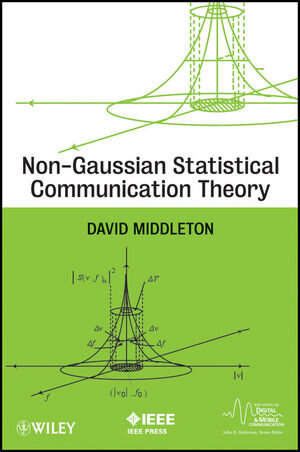Non-Gaussian Statistical Communication Theory
von David MiddletonThe book is based on the observation that communication isthe central operation of discovery in all the sciences. In its„active mode“ we use it to „interrogate“ the physical world, sending appropriate „signals“ and receiving nature's „reply“. Inthe „passive mode“ we receive nature's signals directly. Since wenever know a prioriwhat particular return signal will beforthcoming, we must necessarily adopt a probabilistic model ofcommunication. This has developed over the approximately seventyyears since it's beginning, into a Statistical Communication Theory(or SCT). Here it is the set or ensemble of possibleresults which is meaningful. From this ensemble we attempt toconstruct in the appropriate model format, based on ourunderstanding of the observed physical data and on the associatedstatistical mechanism, analytically represented by suitableprobability measures.
Since its inception in the late '30's of the last century, andin particular subsequent to World War II, SCT has grown into amajor field of study. As we have noted above, SCT is applicable toall branches of science. The latter itself is inherently andultimately probabilistic at all levels. Moreover, in the naturalworld there is always a random background „noise“ as well as aninherent a priori uncertainty in the presentation ofdeterministic observations, i. e. those which are specificallyobtained, a posteriori.
The purpose of the book is to introduce Non-Gaussian statisticalcommunication theory and demonstrate how the theory improvesprobabilistic model. The book was originally planed to include 24chapters as seen in the table of preface. Dr. Middleton completedfirst 10 chapters prior to his passing in 2008. Bibliography whichrepresents remaining chapters are put together by the author'sclose colleagues; Drs. Vincent Poor, Leon Cohen and JohnAnderson.
email pressbooks@ieee. org torequest Ch.10







